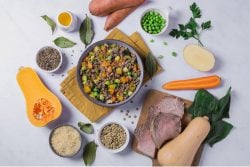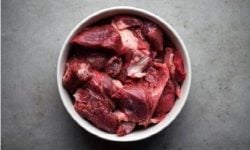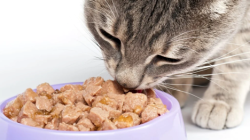The Breakdown Of Different Pet Foods
Why go fresh? Your pet’s nutritional needs will widely vary based on their age, activity level, breed, and size, among other things.
In explaining why you should switch your pet to a fresh meal, we saw that commercially produced pet foods – while following AAFCO’s guidelines – don’t necessarily contain the proper amount of nutrients, harming your pet in the process.
At PawPots, we understand how to balance nutrients in a recipe to promote your pet’s good health. In the process of founding PawPots, we compared the quality of different pet foods by studying their nutrients with the help of veterinary nutritionists, and we wanted to share our results with you.
Dry Food
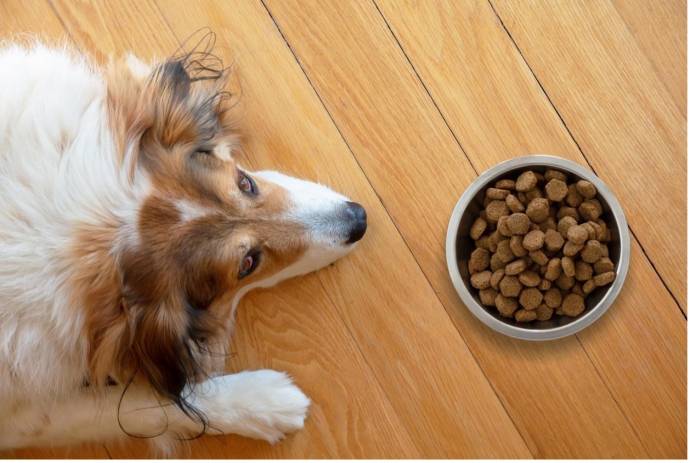
Most pet parents have come to trust and love dry pet food brands, as they are sold on the idea of being easy to store and having a longer shelf life. Yet despite the popularity, some pet owners and veterinarians have expressed concerns about the safety and quality of the ingredients used in some commercial pet food.
One of the biggest concerns with kibble is the sourcing of the meat and its safety. While the FDA does not approve of 4D meat in human food, it does so for dry pet food. 4D meat refers to sources of meat from dead, dying, diseased, or disabled cattle. With that in mind, it is only natural to question the safety of kibble for pets and their health.
Another concern is the quality of the food. Some dry food manufacturers may use lower-quality ingredients or fillers to reduce costs, which can impact the overall nutritional quality of the food. Moreover, many dry food companies use preservatives to prevent the fat in the food from going rancid. They also use artificial colors and other additives in the food to make it look and smell more appealing. Not only do these additives have no nutritional value for the pets, but they can also be quite harmful. Some of these additives have been linked to health problems such as hyperactivity, allergies, and cancer. To add to that, the high-heat processing used to create dry pet food can destroy some of the natural nutrients in the ingredients, making it less nutritious than fresh pet food.
Furthermore, the most obvious shortcoming of dry pet food is the lack of moisture. Dry pet food contains very little moisture, which can lead to dehydration and other health problems in pets. This is especially problematic for cats, who have a low thirst drive and may not drink enough water to compensate for the lack of moisture in their food.
Overall, dry food may not be the best option for pets. The meat used in the process can be sourced from cattle in questionable conditions, the ingredients and content used in dry food may not be the safest or most nutritionally adequate for pets, and this type of food does not provide the hydration needed for optimal health.
Wet Food
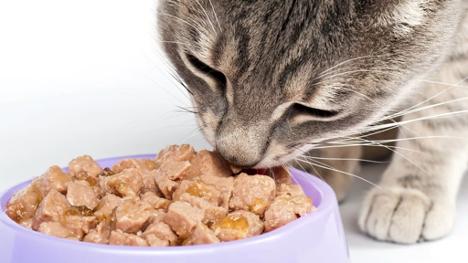
While wet food does provide more hydration than dry food, there are still some concerns that come with feeding it to your pets.
First, cheaper commercial wet foods will only meet the minimum AAFCO nutrient guidelines but may not include higher levels of nutrients that could be beneficial to your pet. On the other hand, wet food designed for specific life stages or health needs is quite expensive, making it inaccessible and unsustainable for most pet parents. This also brings into question the true nutritional value of wet food. Some wet pet foods may not provide a balanced nutritional profile for your pet, as they may be lacking in certain nutrients or have excessive amounts of others.
Secondly, the meat content in wet food is also an issue. Many wet foods are made from meat by-products, meat meal, animal by-product meal, and other ingredients that are pressed and shaped into chunks that only resemble whole cuts of meat, often with unknown digestibility based on the label information.
Finally, wet food has also been associated with pet dental health issues. The reason behind this is that wet pet foods tend to have a stickier texture than that of dry food or fresh and cooked food. This means that wet food can easily stick to pets’ teeth and contribute to plaque and tartar buildup, which can lead to dental issues over time.
Having to question the nutritional value of wet foods, their contents, and their effects on pets’ dental health makes this type of food less than ideal for optimal health and longevity.
Raw Food
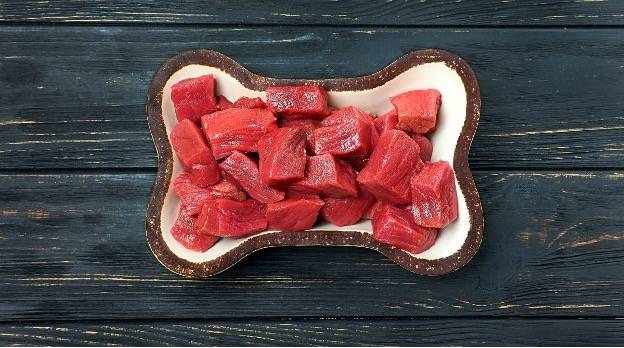
Raw diets are often marketed based on the idea that wild dogs and cats primarily survived on a diet of raw animal meats. While this idea is partially true, it fails to take into account the evolution of these wild animals into domesticated pets and disregards the impact of that evolution on pets’ digestive systems. This idea also overlooks the reality of our food systems today.
First, it is important to understand the history of pets and their progression from wild animals to domesticated ones. The domestication of animals dates back thousands of years and led to changes in food systems for dogs and cats. Over time, domesticated animals were introduced to human food and have since evolved to digest a wide range of foods, including meat, grains, vegetables, and fruits. For example, dogs have evolved to produce higher levels of amylase, an enzyme responsible for breaking down carbohydrates. This evolutionary adaptation has enabled modern dogs to digest a broader range of plant-based foods than their wolf ancestors. It is also important to consider that the evolution of dogs and cats was not limited to natural factors. Many breeds are considered to be man-made; they were created through selective breeding, such as bulldogs or teacup poodles. Can one imagine a Chihuahua hunting and scavenging for food like a wolf, the true ancestor of dogs?
Studies suggest that pets’ diets should include plants and vegetables for optimal health and longevity. While some raw food brands have introduced plants in their meals, many still offer animal protein exclusively based on the idea that pets’ wild ancestors mostly ate animal flesh. However, wild dogs and cats consume their prey whole, including plant material in the stomach contents, which provides essential nutrients and helps them digest all their food. Additionally, it has been observed that some wild carnivores, such as wolves, will actively seek out certain plants in their diet as a source of additional nutrition. As pets evolved, so did their need for plant material. Studies show that while dogs and cats require a diet that is high in animal protein, they also need other nutrients that can only be found in plant-based foods, such as carbohydrates, fiber, and some vitamins and minerals. Dietary fiber, for example, is essential for maintaining gastrointestinal health, regulating blood sugar levels, and promoting satiety.
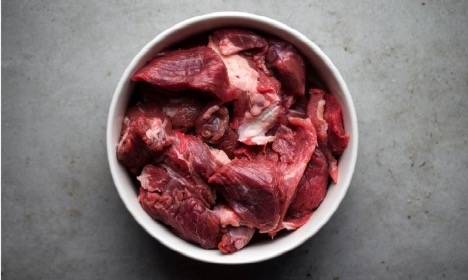
Secondly, one must consider the evolution of our food systems. Thousands of years ago, wild dogs and cats primarily consumed organic prey obtained through hunting. During the domestication period, dogs and cats were often fed wild, organic animals. However, modern food systems have undergone significant changes. Today, the majority of meat is no longer organic and is often processed. It is important to consider the potential risks that come with this feeding method. Raw food diets may pose a threat to the health and safety of pets due to various factors, including contamination, processing conditions, and food safety.
Safety is a significant concern when it comes to raw pet food as it can be contaminated during processing, handling, and storage. Additionally, animals in slaughterhouses are often crowded in unsanitary conditions, increasing the risk of bacterial growth. Studies conducted by the FDA Center for Veterinary Medicine (CVM) show that pets consuming raw food have significant concentrations of potentially harmful bacteria in their saliva and feces, including E. coli, Salmonella, Listeria, and Campylobacter, which can cause illness in both pets and humans. Pathogens can be transmitted through your pet licking you directly or through your coming into contact with inanimate objects such as toys and blankets. That being said, animal protein is an important ingredient that is much needed, but your pet can ingest it in a much safer way.
Slaughterhouses have come under scrutiny for their treatment of animals and their potential impact on food safety, but mass production naturally means lower quality, as animals are not given the same care and attention as they would in smaller-scale operations. This can lead to poor living conditions for animals and increased stress, which can impact the quality and safety of the meat. The combination of poor living conditions and the high volume of animals processed in slaughterhouses makes them a breeding ground for bacteria, further increasing the risk of contamination.
While raw food may be appealing to some pet owners, the potential risks associated with this feeding method cannot be ignored. Nutrient profiles may be lacking because the evolution of pets from wild to domesticated animals is often overlooked. Studies show that pets benefit from plant ingredients in their diets, but raw meat can pose safety and nutritional risks. The conditions in which animals are raised and processed, as well as the processing methods themselves, can increase the risk of contamination and decrease the quality of the meat, making it potentially harmful to pets and their owners.
Fresh, Cooked Food
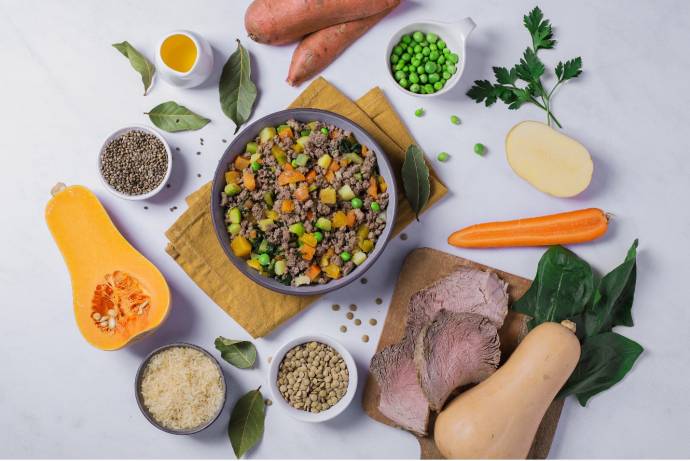
Whether made at home or in a commercial kitchen, fresh foods are often made from whole cuts of meat, vegetables, beneficial nutrients, and oils. The good thing about fresh pet food is that it covers all the concerns listed above. While there are countless benefits to fresh food, we will elaborate on its nutritional benefits, hydration, dental benefits, effects on pet energy, and safety for cooked food for dogs and cats.
First, fresh food can offer better nutrition for pets because it is often more nutrient-dense than processed pet food, which can be full of fillers and additives. The fewer additives in fresh cooked food also means improved digestion for pets. Essentially, healthy fresh food can provide pets with essential vitamins, minerals, and other nutrients necessary for optimal health and a stronger immune system.
Second, fresh food is also great for better hydration. Vegetables, in particular, can help keep pets hydrated, another crucial factor for optimal health. The inclusion of vegetables also means that fresh food can help pets maintain a healthy weight, as it is often lower in calories and higher in nutrients than processed pet food, leaving pets satisfied with the caloric amount they require.
Another benefit to fresh food is the improved dental health of pets. Fresh food typically contains a wide variety of nutrients that are beneficial for overall health, including dental health. Vitamins and minerals such as calcium, phosphorus, and vitamin D are essential for maintaining strong teeth and bones in pets. Antioxidants such as vitamin C and vitamin E can also help to support oral health by protecting the gums from damage caused by free radicals.
Another significant benefit of feeding pets fresh food is increased energy. Since fresh food is often high in complex carbohydrates and other nutrients that provide sustained energy throughout the day, pets are able to lead an active and healthy lifestyle, which is essential for longevity.
Finally, cooked food for dogs and cats offers a level of safety that raw food does not provide. As mentioned above, raw food can be contaminated with bacteria that can only be dealt with through the process of cooking. Lightly cooked fresh food can offer the full nutritional benefits while being safe for pets to consume.
Overall, feeding pets cooked, healthy fresh food can offer a healthy diet for dogs and cats. It helps improve their health and wellbeing and can help prevent health issues, leading to a longer and happier life.
MAKE THE SWITCH TO FRESH TODAY!
References:
1. Raw Pet Food Diets can be Dangerous to You and Your Pet. (2018, February 22). Get The Facts! Raw Pet Food Diets Can Be Dangerous to You and Your Pet | FDA.
2. What’s in Pet Food? (2015, April 29). American Veterinary Medical Association.
3. Dodd, S., Cave, N., Abood, S., Shoveller, A., Adolphe, J., & Verbrugghe, A. (2020, June). An observational study of pet feeding practices and how these have changed between 2008 and 2018. Veterinary Record, 186(19), 643–643. DOI: https://doi.org/10.1136/vr.105828
1
